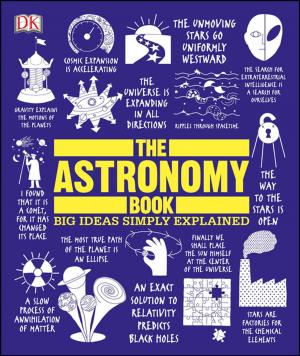Signs of Life
A Semantic Critique of Evolutionary Theory
Nonfiction, Science & Nature, Science, Biological Sciences, Biology, Other Sciences, Philosophy & Social Aspects, Physics| Author: | Ashish Dalela | ISBN: | 9789385384011 |
| Publisher: | Shabda Press | Publication: | June 3, 2015 |
| Imprint: | Language: | English |
| Author: | Ashish Dalela |
| ISBN: | 9789385384011 |
| Publisher: | Shabda Press |
| Publication: | June 3, 2015 |
| Imprint: | |
| Language: | English |
This book challenges the fundamental ideas in the Neo-Darwinian theory of evolution from the perspective of mathematics, physics, computing, game theory, and non-linear dynamics.
It argues that the key ideas underlying evolution—random mutation and natural selection—are based on notions about matter, causality, space-time, and lawfulness, which were supposed true in Darwin’s time, but have been unseated through 20th century developments in physics, mathematics, computing, game theory, and complex system theory. Evolution, however, continues in a relative time-warp, disregarding these developments, which, if considered, would alter our view of evolution.
The book illustrates why natural selection and random mutation are logically inconsistent together. Separately, they are incomplete to account for biological complexity. In other words, the theory of evolution is either inconsistent or incomplete.
The book, however, does not deny evolution. It presents a new theory of evolution that is modeled after the evolution of cultures, ideologies, societies, and civilizations. This is called Semantic Evolution and the book illustrates how this new model of evolution will emerge from the resolution of fundamental unsolved problems of meaning in mathematics, physics, and computing theory.
This book challenges the fundamental ideas in the Neo-Darwinian theory of evolution from the perspective of mathematics, physics, computing, game theory, and non-linear dynamics.
It argues that the key ideas underlying evolution—random mutation and natural selection—are based on notions about matter, causality, space-time, and lawfulness, which were supposed true in Darwin’s time, but have been unseated through 20th century developments in physics, mathematics, computing, game theory, and complex system theory. Evolution, however, continues in a relative time-warp, disregarding these developments, which, if considered, would alter our view of evolution.
The book illustrates why natural selection and random mutation are logically inconsistent together. Separately, they are incomplete to account for biological complexity. In other words, the theory of evolution is either inconsistent or incomplete.
The book, however, does not deny evolution. It presents a new theory of evolution that is modeled after the evolution of cultures, ideologies, societies, and civilizations. This is called Semantic Evolution and the book illustrates how this new model of evolution will emerge from the resolution of fundamental unsolved problems of meaning in mathematics, physics, and computing theory.















